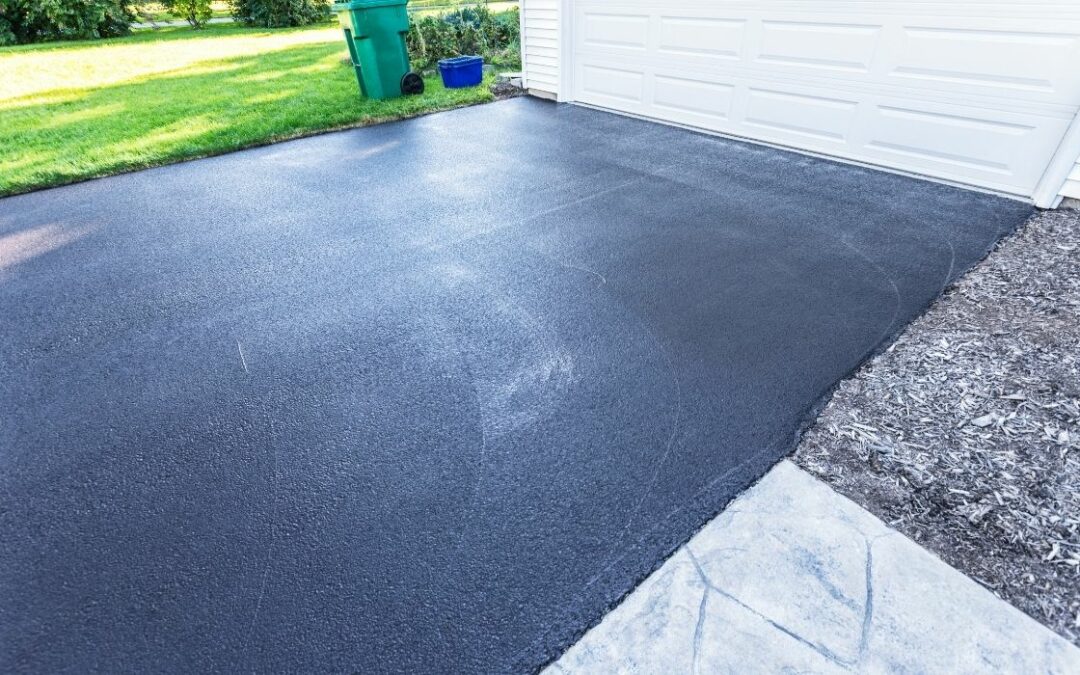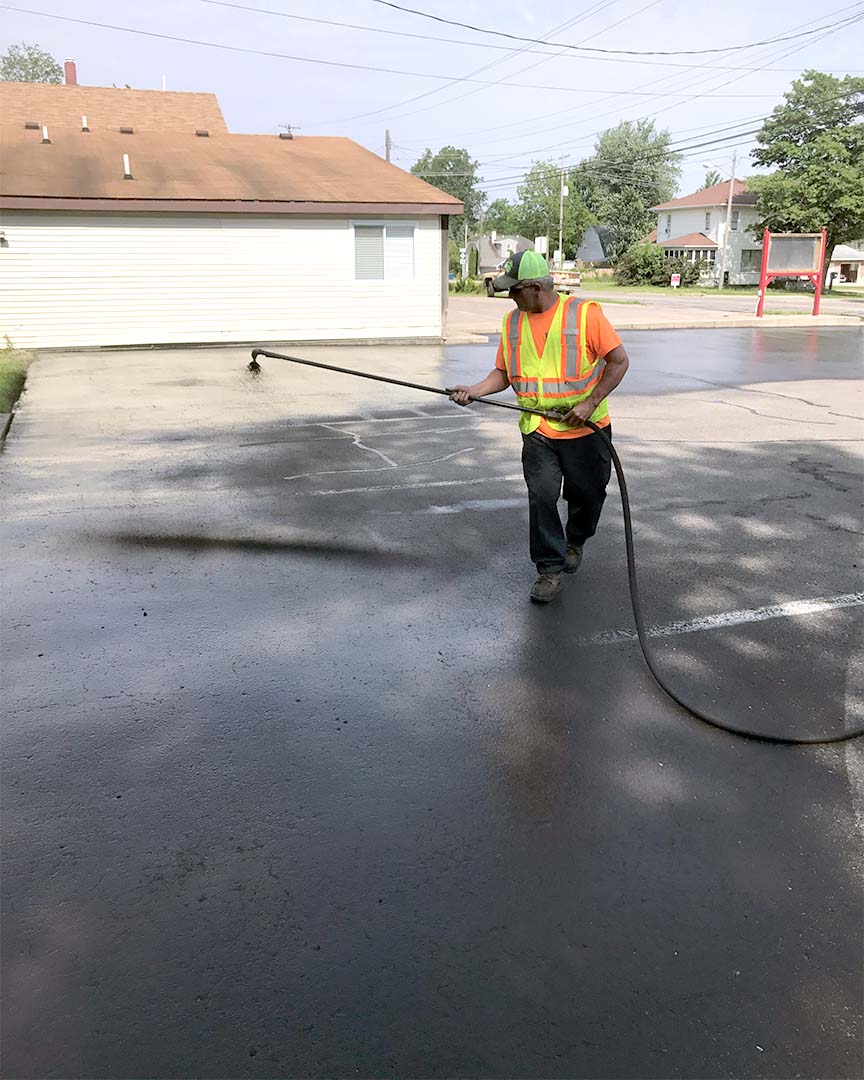Hot Mix Asphalt: A Lasting Option for Sidewalk
Hot Mix Asphalt (HMA) has actually arised as a leading lasting choice for pavement services, providing a myriad of ingenious innovations and ecological benefits. Its capacity to reduce and recycle materials power consumption provides a compelling case for its fostering in road building projects. In addition, the lasting performance and longevity of HMA make it a favored alternative for infrastructure growth. As the demand for environmentally friendly construction methods expands, exploring the subtleties of HMA's sustainability can offer valuable insights into the future of pavement remedies.
Environmental Benefits of Hot Mix Asphalt

Moreover, Hot Mix Asphalt assists to alleviate city heat island effects. Its dark shade takes in sunlight, decreasing the quantity of heat reflected back right into the environment compared to lighter-colored pavements. This can reduce ambient temperature levels in metropolitan locations, decreasing the need for cooling and ultimately decreasing energy intake.
Furthermore, Warm Mix Asphalt adds to enhanced stormwater management. Its porous nature permits water to charge and penetrate the pavement groundwater supplies, decreasing drainage and the threat of flooding. These ecological benefits make Hot Mix Asphalt a sustainable choice for leading roads and highways.
Energy Performance in HMA Production
Is energy performance a critical consider the manufacturing of Warm Mix Asphalt (HMA)? Absolutely. Energy plays a significant role in the manufacturing of HMA, influencing both expense and ecological sustainability. One key aspect of power performance in HMA manufacturing is making use of warm mix asphalt (WMA) technologies (regrading). WMA permits the mixing and positioning of asphalt at reduced temperature levels contrasted to conventional hot mix asphalt, resulting in reduced energy usage throughout manufacturing. This procedure not only lowers fuel usage but additionally decreases greenhouse gas discharges, making it a more environmentally pleasant option.
Additionally, advancements in plant modern technologies have led to more energy-efficient HMA production procedures. By enhancing energy usage in HMA production, the sector can reduce its carbon impact while maintaining top notch sidewalk materials.
Recyclability of Hot Mix Asphalt
The recyclability of Hot Mix Asphalt (HMA) is a pivotal aspect of its sustainability and lasting environmental effect. HMA is one of the most recycled materials in the USA, with over 100 million lots of reclaimed asphalt sidewalk (RAP) being reused annually in new pavement building and construction. Reusing HMA provides numerous environmental advantages, such as minimizing the demand for virgin products, reducing energy usage during production, and decreasing the quantity of waste sent out to garbage dumps.
The procedure of reusing HMA includes grating the existing pavement, crushing it into smaller sized pieces, and blending it with brand-new aggregate and asphalt binder to produce a recycled mix. This recycled mix can often do as well as and even far better than conventional HMA, while calling for fewer basic materials and producing lower greenhouse gas discharges. By integrating RAP into brand-new pavement projects, road companies can preserve natural deposits, lower prices, and minimize the ecological impact of roadway building and maintenance activities. In general, the recyclability of HMA plays a significant function in advertising lasting methods within the pavement sector.

Long-Term Performance of HMA
Asphalt sidewalks demonstrate sturdiness and strength over an extended duration, showing the long-lasting efficiency of Hot Mix Asphalt (HMA) The longevity of HMA can be associated to its ability to withstand heavy traffic tons, rough climate condition, and the effects of aging. Studies have revealed that properly designed and effectively created HMA pavements can last for 20 years or more with routine upkeep. The key to maximizing the long-term efficiency of HMA lies in making use of high-grade materials, adhering to ideal methods in building and construction, and implementing reliable upkeep methods. Proper water drainage, routine assessments, and timely fixings are important for preserving the architectural honesty of HMA sidewalks over time. Additionally, developments in HMA technology, such as using polymer-modified binders and cozy mix asphalt, have actually better enhanced the toughness and longevity of HMA sidewalks. By prioritizing top quality construction and upkeep practices, HMA proceeds to confirm itself as a economical and sustainable commercial parking lot paving solution for durable sidewalk framework.

HMA: Toughness and Sustainability
Demonstrating both durability and sustainability, Warm Mix Asphalt (HMA) has actually become a keystone in the building of lasting pavement infrastructures - regrading. HMA's toughness originates from its capacity to withstand hefty loads, harsh climate condition, and high web traffic volumes, making it a reputable option for roads, freeways, and airport paths. The composition of HMA, which typically consists of accumulations, binder, and filler, plays an essential role in boosting its durability and resistance to tear and wear
Moreover, HMA's sustainability depends on its recyclability and energy-efficient production procedure. The ability to reuse reclaimed asphalt sidewalk (RAP) in new HMA blends lowers the need for virgin products and lessens the environmental impact of sidewalk construction and maintenance. Furthermore, the energy effectiveness of producing HMA exists in its lower mixing temperature levels compared to various other sidewalk materials, leading to lowered power consumption and greenhouse gas exhausts.
Conclusion
Finally, hot mix asphalt (HMA) provides a sustainable remedy for sidewalk with its eco-friendly qualities. HMA's recyclability, power effectiveness in production, and long-term longevity make it an eco-friendly option for roadway building and construction. By conserving natural deposits, minimizing waste, and decreasing greenhouse gas discharges, HMA plays an important duty in advertising sustainability in facilities growth. Its capability to alleviate metropolitan warmth island impacts better underscores its significance in developing resilient and ecologically aware sidewalk systems.
HMA is one of the most recycled materials in the United States, with over 100 million loads of reclaimed asphalt pavement (RAP) being reused yearly in new sidewalk building and construction.The procedure of recycling HMA includes grating the existing sidewalk, crushing it into smaller pieces, and mixing it with brand-new accumulation and asphalt binder to develop a recycled mix.Asphalt pavements demonstrate longevity and strength over an extended duration, showing the long-term performance of Warm Mix Asphalt (HMA) Additionally, innovations in HMA innovation, such as the usage of polymer-modified binders and warm mix asphalt, have further enhanced the toughness and long life of HMA sidewalks. The ability to reuse recovered asphalt sidewalk (RAP) in new HMA mixtures minimizes the need for virgin materials and decreases the ecological influence of sidewalk building and maintenance.